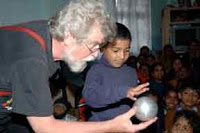 A new book by Michael K. Bohn, Heroes and Ballyhoo: How the Golden Age of the 1920s Transformed American Sports, profiles the great American sports heroes of that era and highlights their roles in turning their sports into the kind of large spectator events they are today. Among them are the standards like Babe Ruth, Bobby Jones, Jack Dempsey, and Knute Rockne, but also those from the fringes of modern sport.
A new book by Michael K. Bohn, Heroes and Ballyhoo: How the Golden Age of the 1920s Transformed American Sports, profiles the great American sports heroes of that era and highlights their roles in turning their sports into the kind of large spectator events they are today. Among them are the standards like Babe Ruth, Bobby Jones, Jack Dempsey, and Knute Rockne, but also those from the fringes of modern sport.
Swimmers like Johnny Weissmuller, who turned Olympic success into a seminal role as Tarzan, and Gertrude Ederle, the first to swim the English Channel are profiled. Helen Wills is here, the winner of 31 Grand Slam tennis titles who the New York Times called “the first American born woman to achieve international celebrity as an athlete.” Heroes and Ballyhoo also considers the role of tennis player Bill Tilden and golfer Walter Hagen in bringing large audiences to their sports.
 Arena sports became a cornerstone of modern American life in the 1920s, after Americans, freed from the burden of World War I and Victorian traditions, seemed to seek out everything that was modern, from bobbed hair, bathtub gin, jazz, Model Ts, movies and radio to fads of all kinds.
Arena sports became a cornerstone of modern American life in the 1920s, after Americans, freed from the burden of World War I and Victorian traditions, seemed to seek out everything that was modern, from bobbed hair, bathtub gin, jazz, Model Ts, movies and radio to fads of all kinds.
The author goes further to explore the people behind the scenes: press agents, and over-the-top sports writers and journalists that helped establish what the publisher calls “the secular religion of sports and sports heroes, and helping bond disparate social and regional sectors of the country.”
Reporters like Grantland Rice and Damon Runyon, are found here, along with modern era promoters like C. C. Pyle and Tex Rickard and agent Christy Walsh, a founder of sports marketing.
Photo: Parade for Gertrude Ederle coming up Broadway, New York City in 1926.







